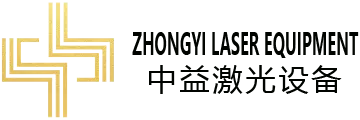Laser marking technology has made another breakthrough: Color marking has been industrially applied, facilitating the upgrade of high-end manufacturing
Introduction
In recent years, with the rapid development of laser technology, the application of laser marking machines in the industrial field has been continuously deepened. Traditional laser marking mainly uses black and white or single color, but the newly developed color laser marking technology has successfully broken through this limitation, providing more diverse solutions for high-end product identification, art creation, anti-counterfeiting and traceability, and other fields.
The principle of color laser marking technology
Color laser marking does not use color lasers. Instead, it precisely controls laser parameters (such as wavelength, power, and frequency) to create oxidation or thin-film interference effects on the surfaces of materials like metals, plastics, and ceramics, thereby presenting different colors. For example:
Stainless steel: By adjusting the laser energy density, oxide films of different thicknesses are generated, reflecting colors such as gold, red, and blue.
Titanium alloy: By using laser-induced periodic surface structure (LIPSS), a rainbow-colored effect is formed.
Plastic/ceramic: Special coatings or composite materials are used, and laser triggers chemical reactions to achieve color development.
2. Technical advantages and application scenarios
Core advantages
No ink required: Environmentally friendly and pollution-free, in line with the trend of green manufacturing.
High-precision permanence: The color adheres firmly, is wear-resistant and corrosion-resistant.
Flexible customization: Programmable design of complex patterns to meet personalized needs.
(2) Application fields
Luxury goods and jewelry: Mark colorful logos on precious metals to increase the added value of products.
Electronic components: PCB boards are color-coded for easy traceability of precision devices.
Medical devices: Surgical tools are marked in color to avoid confusion.
Anti-counterfeiting labels: Complex colored patterns are difficult to replicate, enhancing security.
3. Industry Trends and Cases
Domestic progress: In 2023, a laser enterprise in Shenzhen launched a fiber laser color marking machine, which can achieve over ten color gradients on titanium alloys and has been used for marking aerospace parts.
International breakthrough: A German manufacturer has generated full-color images on the surface of glass through ultrafast laser (picosecond level) technology, with a resolution reaching the micrometer level.
Success story: A certain Swiss watch brand adopted color laser marking technology, directly engraving the customer's signature on the watch case and presenting it in gold, replacing the traditional etching process.
4. Future Trends and Challenges
Technical optimization: Increase marking speed, reduce costs, and expand applicable materials (such as transparent glass, fiber fabrics).
Intelligent integration: By integrating AI algorithms, it automatically matches material and color parameters.
Industry standards: Currently, there are no unified norms for color marking. It is necessary to establish an evaluation system for color durability and consistency.







